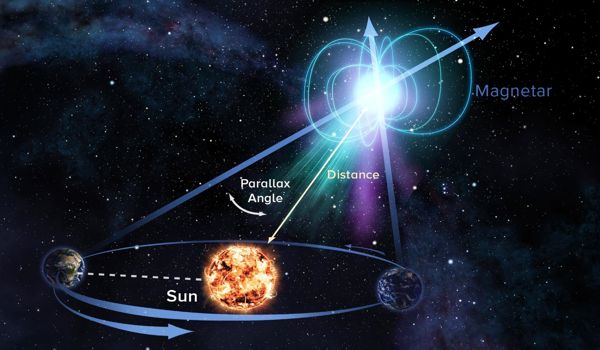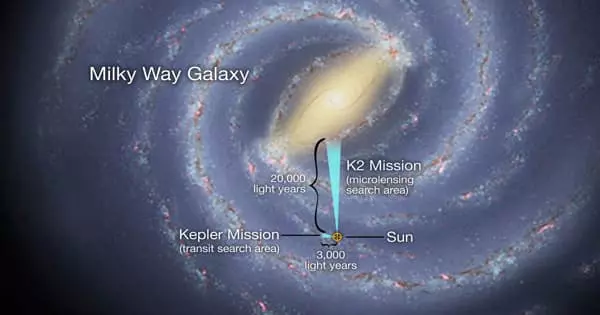Astronomers only recently discovered the mysterious signals known as fast radio bursts (FRBs). The bursts are brief and powerful, lasting only.001 of a second on average, but delivering as much energy in that millisecond as our sun does in three days. Fast radio bursts, on the other hand, are not uncommon. According to astronomers, approximately 1,000 of them arrive on Earth each day. We don’t know what causes them yet, but as new research comes in, ideas are being ruled out or strengthened.
Fast Radio Bursts (FRBs) are extremely powerful and short-lived light emissions from unknown sources. We’ve only known about them for less than two decades, and we still have a lot of questions about them. Scientists recently announced the discovery of the closest one, which comes from a different galaxy just 11.7 million light-years away in the galaxy M81.
The observations, which were published in The Astrophysical Journal Letters, describe FRB 20200120E as a repeating FRB, which means that several pulses were discovered from the direction of M81. A new analysis goes even further, revealing that it is not only the nearest extragalactic FRB (we recently had one in our galaxy), but it is also coming from an unusual location: a globular cluster.
Fast Radio Bursts (FRBs) are extremely powerful and extremely brief emissions of light from unknown sources. Scientists have recently reported the discovery of the closest one coming from a different galaxy just 11.7 million light-years from us in the galaxy M81.
Globular clusters are densely packed groups of stars that orbit galaxies in their halo, the spherical region surrounding the main disk. FRBs are thought to be caused by young, extremely magnetic neutron stars known as magnetars, and because globular clusters are made up of older stars, the researchers were surprised by the discovery.
“In a globular cluster, we discovered a fast radio burst!” In a tweet about the discovery, co-author Dr. Bryan Gaensler, Director of the Dunlap Institute for Astronomy and Astrophysics, said, “This is definitely not a place where fast radio bursts are expected to live.” “What exactly is going on?”
There’s also the possibility that the FRB came from even closer, from the outskirts of our Milky Way galaxy (one such was detected in April 2020). The spread out of the signal can be used to determine how far away they are. The further away the signal travels from us, the more interaction it has with electrons along the way, causing it to smear out. On the other hand, the closer it is, the less smeared out it is – that is, the sharper the spike of the signal. The spike in this case is unusually narrow and could have originated somewhere between the outskirts of our galaxy and M81.

The discovery paper is available on ArXiv and has been submitted for publication. The team has proposed a few scenarios for locating the potential source of an FRB in a globular cluster. Instead of a magnetar formed in a core-collapse supernova (when a star runs out of fuel and collapses on itself), the team proposes alternative scenarios for the possible magnetar powering the FRB. It could be the result of a white dwarf stealing material from a companion and collapsing into a magnetar. Perhaps a magnetar formed as a result of the merger of two compact stars.
The closer the FRB source, the greater the possibility of determining what causes FRBs. As a result, this discovery is well suited to aid in this endeavor. Magnetars, which are neutron stars with intensely powerful magnetic fields, are the current leading candidate for the origin of FRBs.
FRBs are not completely understood, and while the magnetar explanation appears to be the most likely, something else could be at work here. The team’s alternative hypotheses point to another type of neutron star – a millisecond pulsar – as a possible culprit. Perhaps the radio pulses are caused by a binary system.
What’s exciting is that because FRB 20200120E is 40 times closer than any other known FRB, it can be studied in-depth, and its nature – and possibly more insight into FRBs in general – can be learned from it.
However, the astronomers identified the neighborhood of the nearby spiral galaxy M81 as the most likely host (that is, nearby in astronomical terms, 12 million light-years from us). Although M81 differs from other galaxies where FRBs have been discovered in that the region where the FRB appears to originate is farther away from the galaxy than expected, the region where the FRB appears to originate is home to at least four known objects. One is an ionized gas region (an H II region), one is a globular cluster, one is an X-ray source, and one is a radio source. There are reasons to believe that each of these is a possible source of the repeating FRB, and astronomers are requesting additional observations to learn more.
















